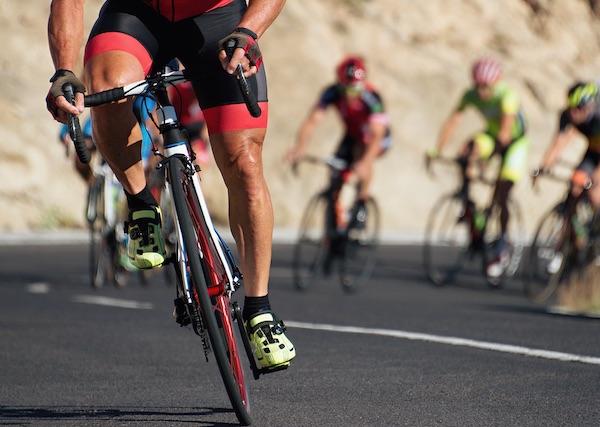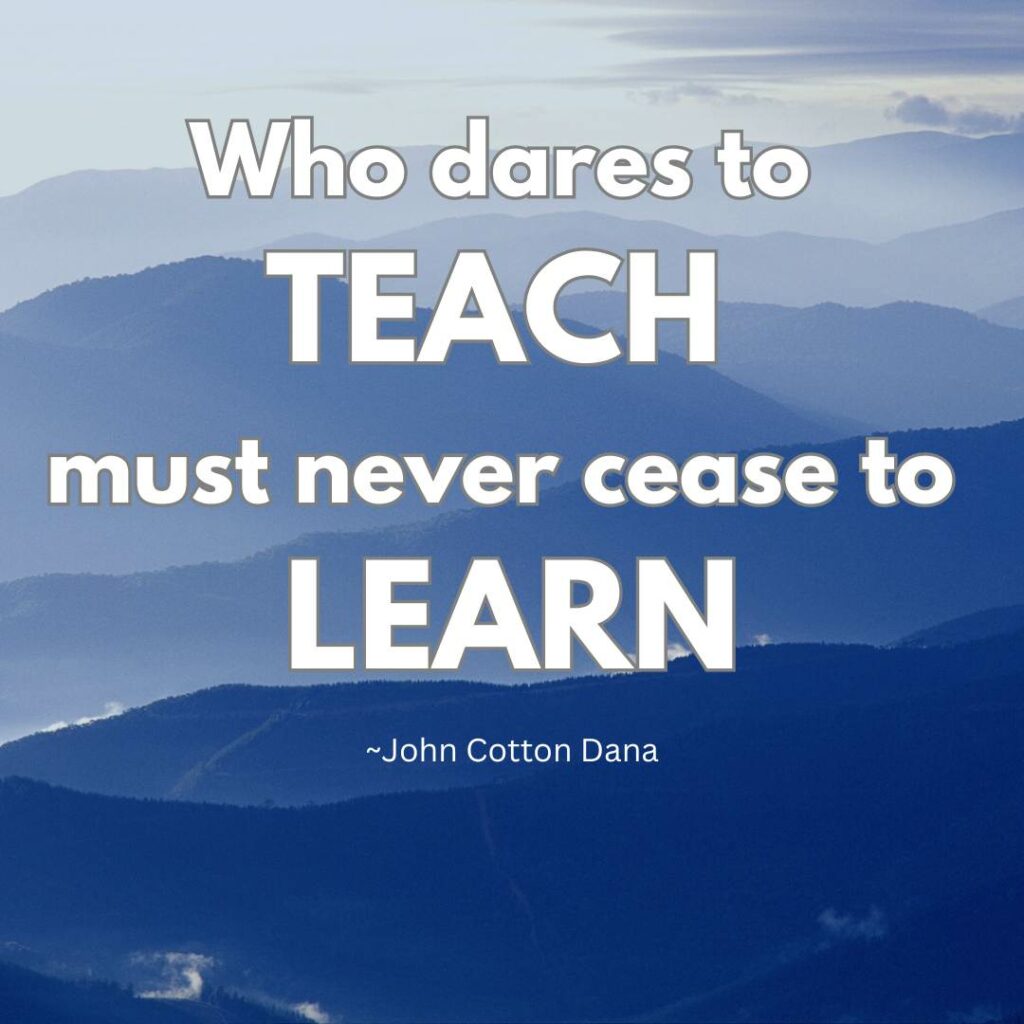EMBRACE THE RIDE TO GREATNESS IN 2024!
In the cycling realm, we’re accustomed to urging our riders to push beyond their self-imposed limits. But what about us, the architects of motivation for our riders? Is this the year to redefine our own coaching journey, stepping beyond the familiar into the realm of the extraordinary?
It’s time to break free from what is comfortable and routine and to unveil our potential with enthusiasm! Will this be the year you propel yourself into the unknown, daring to explore uncharted coaching territories? Or will you settle back into the comfort of mediocrity and status quo—always creating the same types of classes, with the same kind of music, using the same cues, rehashing the same coaching clichés, same ole everything?
Every time you ask yourself that question, rephrase it as one of the cues you might give your riders on a challenging climb in one of your classes. For example, you might say the following at the beginning of a 15- to 20-minute steady-state climbing segment, one with no recoveries and a few short, steep standing segments:
Is this the moment you will challenge yourself to stay committed to this long climb at a consistent effort and cadence? Or are you going to fall back into what you often resort to and succumb to the voice in your head to hold back, to not commit, to let your mind get distracted?
Remember, everything you want is on the other side of your comfort zone; let today be the day you cross that line!
Imagine posing the same challenge to yourself as an instructor! Today is the day to leap into the unknown!
From the very beginning, ICA’s articles and profiles have consistently nudged our instructor members to venture beyond their comfort zones. We’ve encouraged them to broaden their coaching repertoire, tackle unfamiliar class formats (perhaps those extended seated intervals that can feel daunting), to embrace music outside their typical playlists, and to propel their riders toward extraordinary achievements. It’s a tradition of pushing boundaries that we’re proud of, and as we usher in 2024, we want to build on this legacy of growth and empowerment.
Join me in declaring that this year will be nothing short of spectacular! The following seven ideas will propel you forward, each one designed to stretch your limits and ensure this year surpasses all expectations. Share your personal aspirations in the comments and let’s embark on this exhilarating journey together!
Top 7 Ways to Grow as an Indoor Cycling Instructor in 2024
1. Cultivate Inspirational Coaching
Venturing into the realm of mind-body coaching can be intimidating for both new and seasoned instructors. It’s a unique skill set that distinguishes exceptional indoor cycling instructors. Think about the iconic coaches across various sports and their ability to delve into the minds of their athletes, igniting motivation from within. It’s time to embrace this special skill and elevate your coaching to new heights.
You have the potential to be more than just a cycling instructor; become an inspiration. Stretch yourself to include more mental strength and mind-body coaching in your arsenal!
As an ICA member, you gain access to a treasure trove of articles providing inspirational mental strength, mind-body coaching, and visualization cues tailored for every instructional scenario. Whether guiding warm-ups or propelling riders through challenging climbs, sprints, or intervals, our series on visualization cueing equips you with the tools to inspire greatness. Check out our wealth of content designed to transform your coaching journey.
Recommended Reading: Flow in Sports; Body Mind Mastery; Thinking Body, Dancing Mind; The Inner Game of Tennis. Explore ICA’s treasure trove of articles on mental strength and visualization cues.
ICA has dozens of articles that provide inspirational mental strength, mind-body coaching, and visualization cues for every situation you’ll find yourself in as an instructor, from describing the warm-up to pushing riders to exceed their limitations on hard climbs, sprints, or intervals. Here is our series on visualization cueing.

2. Expand Your Playlists with More Diverse Music
So many instructors confine themselves to familiar and popular genres of music, assuming they align with their riders’ preferences. What if some of your participants secretly yearn for a broader musical experience? What if there are unexplored musical realms you may not even be aware of, styles that help engage the mind and the body in your cycling classes, especially at higher cadences, such as downtempo music? What if your non-stop use of EDM tracks makes them want to wear earplugs?
Personally, as a self-proclaimed former pop-music skeptic, diving into more mainstream tunes presented a personal challenge. However, my perspective transformed with the selections featured in the ICA weekly Mainstream Music Monday (MMM) series. Over the years, contributors like Kala, Karen, Mark, and Carole posted MMM songs that opened my ears to songs I may never have previously considered. I now infuse my classes with much more pop music, much to my and my riders’ enthusiasm.
Many instructors may face the opposite dilemma—being stuck in a mainstream pop and EDM rut without exploring other genres conducive to intrinsic motivation, like world, downtempo, or psychedelic trance.
I challenge you to break free from your musical comfort zone, whether it’s mainstream or niche. I’m not suggesting you play songs you dislike—this is about being open-minded and creating a connection with your riders through unexpected musical experiences. In the process, you may discover genres you had no idea were so engaging and useful for the cycling studio. Like me, you may learn to appreciate styles you normally dismiss.
Bill, a longtime popular ICA music contributor, regularly unveils indie and alternative gems through our Friday Favorites series, providing a refreshing musical perspective.
The Step Outside Your Musical Box (SOYMB) series on ICA is tailored for instructors seeking to diversify their playlists. Introducing genres less common in cycling studios, these collections are a fantastic addition to your playlists and allow you to infuse your classes with new musical energy.
Here are our SOYMB collections (with more on the way):
Motown
EMO Music
Hip-Hop (the good stuff from the ’90s!)
Country (you’re going to be surprised!)
Canadian Groups (good for a theme or on Canada Day, July 1)
Weird Music (yes, we’re weird. And fun! And you can be too!)
Soundtracks
Cover Songs (contains both the original and the covers so you can do an “out-and-back” ride.)
Indie Rock
Downtempo (one of my favorites; use it for introspective higher-cadence work in the 90–100 rpm range.)
Rock and Roll. This is our most in-depth SOYMB offering—you’ll find four separate bucket playlists: classic rock, modern rock, female rockers, and a fun playlist with songs about rock and roll! All told there are almost 1,400 rock songs to choose from.

3. Seek Candid Evaluation
Urging your students to evaluate your classes and coaching may seem daunting, yet it stands out as one of the most effective avenues for personal growth. Through this process, you gain insights into how you are perceived, the reception of your music choices, and whether your coaching resonates with your riders.
This courageous step also provides an ideal platform to discuss your “keep it real” approach, especially when steering away from popular gimmicks that some riders might erroneously think are beneficial. It allows you to explain why you do what you do.
Our coaching series by Cori Parks delves into the rider-centric approach, and seeking feedback aligns with this rider-centered philosophy.
Conduct evaluations anonymously, creating an environment where honest opinions flourish. Prepare to be amazed at the results—perhaps humbled, yet also proud of your commitment to learning and growth. Just like a business refining its customer service through surveys, you show that you genuinely care for your riders’ needs and aspirations, fostering an atmosphere where success becomes a shared journey.
4. Teach More Off the Bike
I’ve come across instructors who refuse to get off the bike, and frankly, I find it puzzling. Some argue their students prefer a constant on-bike presence, but let me challenge that notion. While riders appreciate seeing their instructor in the workout, effective coaching goes beyond being a perpetual on-bike fixture and simply yelling at the class from the front of the studio.
Sure, there’s merit in your riders watching you on the bike, but there’s an art to knowing when to step off. Choose strategic moments to encourage commitment, fine-tune form, address incorrect setup, ignite that extra spark in a sprint, gently suggest a rider to hold back if you see them floundering, acknowledge excellent effort, and so much more. These off-the-bike moments invite your riders to take their minds off of you and immerse themselves in their movements, forging a deeper connection with their ride.
Mastering the balance between on-the-bike and off-the-bike coaching is a game-changer and will set you apart from your peers if done well. And hey, ICA’s got your back with a five-part series on how and when to teach off the bike. Whether you’re looking to conduct an entire off-the-bike class or just want to perfect those occasional dismounts, it’s all in there.
Elevate your coaching by embracing this dynamic interplay, creating an experience that’s not just about the bike—it’s about the journey.
5. Harness the Power of Power
Understanding the realm of power training in cycling might seem like uncharted territory, but trust me, it’s a journey worth taking. With power becoming more prevalent in indoor cycling, it’s crucial to harness its potential. Unfortunately, many clubs with power-equipped bikes miss the mark, neglecting these metrics or using them incorrectly. We’ve all heard horror stories of that instructor who tells everyone to ride at a certain wattage!
Whether your studio is getting an upgrade or you’re embarking on a power-training quest, mastering the language of teaching with power takes time. Creating power-based profiles, understanding FTP, and guiding riders through power zones requires a level of confidence that only comes with experience.
That’s where ICA comes in as the next step in your power education—we help to demystify the language of power. Most of our profiles not only incorporate intensity based on power zones but also provide cues based on perceived exertion.
Dive into our series on understanding FTP and teaching FTP tests, and ensure you can offer precise training zones for your riders.
Our video training, “The Tour of the Training Zones,” is a master class on comprehending power zones. It illustrates that riders can achieve almost every power zone at various cadences; learn how to teach your riders that they can attain almost every power zone* at almost every cadence. (*Some caveats apply—you’ll learn that as well!)
For those who haven’t experienced power training and don’t see their studios installing bikes with power in their immediate future, I urge you not to discount the importance of understanding this important metric. Because here’s the thing…you are producing power even if you don’t have a power meter, just like your heart rate is increasing with effort even if you don’t have a heart rate monitor to see it! Understanding the science behind power production—where power equals force times velocity—can significantly enhance your coaching, cueing, and profile creation. Check out our signature ride called “Pretend You Have Power,” a foundational ICA profile from our early days that illustrates how you can integrate power concepts into your coaching even without watts. It helps to educate your riders about the vital relationship between cadence and resistance and their effect on intensity—a relationship that exists whether you have power meters to see it or not!
Embrace the power journey—it’s not just about the numbers; it’s about transforming your coaching landscape and understanding of effort.
6. Deepen Your Exercise Physiology Knowledge
Unraveling the mysteries of exercise physiology may sound daunting, but trust me, it’s a game-changer every instructor needs. While what we do on a bike isn’t rocket science, it certainly is exercise science! I get it; expanding your understanding of physiology might seem intimidating, but let’s face it—knowledge in this arena is non-negotiable. You are pushing your riders to potentially very hard efforts—you must have confidence that what you are doing is not only plausible but is effective, safe, and based on sound cycling and exercise training principles. In addition, it’s crucial to know when, how, and why to suggest modifications based on factors like training level, age, and experience.
In my more than 25 years as a master trainer, I’ve observed that too many instructors, perhaps even you, aren’t as well-versed in physiology as they should be. The misinformation circulating in the instructor community is disconcerting. It’s especially obvious in the Facebook forums for cycling instructors.
If you find yourself nodding along, here’s the good news—it’s easily remedied! No need to enroll in a full-blown academic program; you just need to dive into relevant articles and explore exercise science workshops tailored for indoor cycling. The next time you’re at a conference, resist the allure of all those HIIT classes (I know they’re tempting) and instead, register for sessions on lactate threshold training or aerobic development.
Now, the fastest, easiest, most convenient, and economical way to bolster your knowledge in this area is by joining ICA. It’s a treasure trove of workshops and articles crafted for indoor cycling instructors; the specific science our industry craves, presented in an easy-to-understand manner by our exceptional contributors. Every profile is vetted to make sure it adheres to proper training principles; simply by using ICA profiles, you can expand your own understanding of how to assemble effective and scientifically sound training sessions on your own.
ICA members gain exclusive access to a two-part video workshop on Exercise Science for Cycling Instructors. Led by Dr. Jennifer Klau, who holds a Ph.D. in exercise science and was one of the original master instructors for the Spinning® program, this educational session alone is worth the price of membership.
Elevate your understanding in this crucial area and expand your thirst for knowledge, because when you know the science behind what you are doing, you enhance not just your teaching but the entire indoor cycling experience.

7. Commit to “Do No Harm”
In the world of fitness, where standards may be lacking, adopting a mindset akin to the medical profession’s Hippocratic Oath becomes paramount. While there might not be a formal pledge in our industry, as fitness professionals we bear the responsibility to comprehend our craft inside and out. This involves not only maximizing results but, more importantly, minimizing risks—an understanding rooted in both exercise science (see #6) and proper cycling technique.
Even if you or your students aren’t seasoned outdoor cyclists, mastering the proper technique of riding a bicycle is non-negotiable. Don’t listen to anyone who suggests that indoor cycling isn’t like “real” cycling; that’s akin to claiming you’re not truly “boxing” in a kickboxing class, not genuinely “rowing” on an indoor rower, or even not “running” while on a treadmill. There may be some small differences due to the equipment or your relationship to gravity, but in each of those cases, you are still performing the same movements and applying similar forces as in their respective sport. Why not do it correctly?
Steer clear of gimmicks on the bike—they are often only employed because of the incorrect belief that it’s the only way to retain rider interest. Avoid incorporating weights on the bike and steer clear of push-ups, tap-backs, crunches, freezes, isolations, or other non-traditional movements. They add no benefit because you aren’t in the optimal position to engage muscles properly or to create adaptations, while also detracting from the physical act of proper cycling. In short, gimmicks on the bike are a zero-sum game for everyone.
If you want an upper-body or core workout, why not create a combo class that is 30 minutes of HIIT cycling followed by 30 minutes of weight training, TRX, core work, or yoga/stretching? This way, everyone reaps the benefits of a well-rounded fitness experience.
MAKE 2024 YOUR UNFORGETTABLE YEAR OF GROWTH!
When you adhere to foundational basics and infuse your ride with fabulous music, sprinkle in a dose of fun, add a dash of excitement, and top it off with great coaching, that is the recipe for success in the cycling studio!
Always remember this important adage:

Get ready to supercharge your journey as an instructor and achieve all your coaching goals with the Indoor Cycling Association (ICA)!
I’m Jennifer Sage, the founder and master trainer behind ICA, bringing over four decades of passion and expertise in the fitness industry. With a fitness career that began in the early 1980s, I’ve dedicated myself to indoor cycling since 1996. I’ve been training and educating instructors since 1997, initially for the Spinning® program and then for ICA since 2011. From teaching around the world to observing countless classes, I’ve gathered insights that fuel the comprehensive and inspiring resources you’ll find at ICA.
I’ve witnessed it all, and I can assure you, there’s no other platform catering to instructors that delivers such a wealth of educational and motivational content, especially with the convenience of no travel required! And the best part? It comes at an incredibly small investment.
Every facet covered in the Top 7 Ways to Grow as an Indoor Cycling Instructor is thoroughly addressed in the archives of ICA, and that’s just the tip of the iceberg.
Now, seize the moment and make 2024 your greatest year yet by doing what you love most—inspiring your riders and filling your classes with greatness! Join ICA, and together, let’s elevate you to the greatest version of yourself!
[This article first appeared in 2016 and remains relevant and important for all instructors every single year. I update it every year with some new tips. Happy 2024!]



This article was excellent and much needed read for me. Thanks for the inspiring words to make this year 2023 the year of change ❤️
Thanks for sharing your wisdom Jennifer….Looking forward to growing as a stronger more confident instructor because of ICA.
Blessings,
Michele
Great insight. My 2018 goal is to learn more about exercise science #7! I am so glad I joined ICA last Spring and see true value in building your overall indoor cycling strengths and now I will be reviewing articles covering physiology. See you at the Top!